Intel Core i7 3960X (Sandy Bridge E) Review: Keeping the High End Alive
by Anand Lal Shimpi on November 14, 2011 3:01 AM EST- Posted in
- CPUs
- Intel
- Core i7
- Sandy Bridge
- Sandy Bridge E
No Integrated Graphics, No Quick Sync
All of this growth in die area comes at the expense of one of Sandy Bridge's greatest assets: its integrated graphics core. SNB-E features no on-die GPU, and as a result it does not feature Quick Sync either. Remember that Quick Sync leverages the GPU's shader array to accelerate some of the transcode pipe, without its presence on SNB-E there's no Quick Sync.
Given the target market for SNB-E's die donor (Xeon servers), further increasing the die area by including an on-die GPU doesn't seem to make sense. Unfortunately desktop users suffer as you lose a very efficient way to transcode videos. Intel argues that you do have more cores to chew through frames with, but the fact remains that Quick Sync frees up your cores to do other things while SNB-E requires that they're all tied up in (quickly) transcoding video. If you don't run any Quick Sync enabled transcoding applications, you won't miss the feature on SNB-E. If you do however, this will be a tradeoff you'll have to come to terms with.
Tons of PCIe and Memory Bandwidth
Occupying the die area where the GPU would normally be is SNB-E's new memory controller. While its predecessor featured a fairly standard dual-channel DDR3 memory controller, SNB-E features four 64-bit DDR3 memory channels. With a single DDR3 DIMM per channel Intel officially supports speeds of up to DDR3-1600, with two DIMMs per channel the max official speed drops to 1333MHz.
With a quad-channel memory controller you'll have to install DIMMs four at a time to take full advantage of the bandwidth. In response, memory vendors are selling 4 and 8 DIMM kits specifically for SNB-E systems. Most high-end X79 motherboards feature 8 DIMM slots (2 per channel). Just as with previous architectures, installing fewer DIMMs is possible, it simply reduces the peak available memory bandwidth.
Intel increased bandwidth on the other side of the chip as well. A single SNB-E CPU features 40 PCIe lanes that are compliant with rev 3.0 of the PCI Express Base Specification (aka PCIe 3.0). With no PCIe 3.0 GPUs available (yet) to test and validate the interface, Intel lists PCIe 3.0 support in the chip's datasheet but is publicly guaranteeing PCIe 2.0 speeds. Intel does add that some PCIe devices may be able to operate at Gen 3 speeds, but we'll have to wait and see once those devices hit the market.
The PCIe lanes off the CPU are quite configurable as you can see from the diagram above. Users running dual-GPU setups can enjoy the fact that both GPUs will have a full x16 interface to SNB-E (vs x8 in SNB). If you're looking for this to deliver a tangible performance increase, you'll be disappointed:
| Multi GPU Scaling - Radeon HD 5870 CF | |||||
| Max Quality, 4X AA/16X AF | Metro 2033 (19x12) | Crysis: Warhead (19x12) | Crysis: Warhead (25x16) | ||
| Intel Core i7 3960X (2 x16) | 1.87x | 1.80x | 1.90x | ||
| Intel Core i7 2600K (2 x8) | 1.94x | 1.80x | 1.88x | ||
Modern GPUs don't lose much performance in games, even at high quality settings, when going from a x16 to a x8 slot.
I tested PCIe performance with an OCZ Z-Drive R4 PCIe SSD to ensure nothing was lost in the move to the new architecture. Compared to X58, I saw no real deltas in transfers to/from the Z-Drive R4:
| PCI Express Performance - OCZ Z-Drive R4, Large Block Sequential Speed - ATTO | ||||
| Intel X58 | Intel X79 | |||
| Read | 2.62 GB/s | 2.66 GB/s | ||
| Write | 2.49 GB/s | 2.50 GB/s | ||
The Letdown: No SAS, No Native USB 3.0
Intel's current RST (Rapid Story Technology) drivers don't support X79, however Intel's RSTe (for enterprise) 3.0 will support the platform once available. We got our hands on an engineering build of the software, which identifies the X79's SATA controller as an Intel C600:
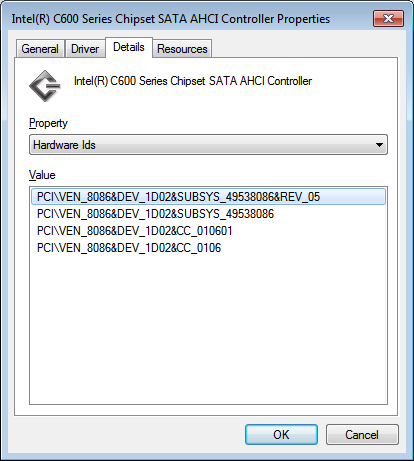
Intel's enterprise chipsets use the Cxxx nomenclature, so this label makes sense. A quick look at Intel's RSTe readme tells us a little more about Intel's C600 controller:
SCU Controllers:
- Intel(R) C600 series chipset SAS RAID (SATA mode)
Controller
- Intel C600 series chipset SAS RAID ControllerSATA RAID Controllers:
- Intel(R) C600 series chipset SATA RAID ControllerSATA AHCI Controllers:
- Intel(R) C600 series chipset SATA AHCI Controller
As was originally rumored, X79 was supposed to support both SATA and SAS. Issues with the implementation of the latter forced Intel to kill SAS support and go with the same 4+2 3Gbps/6Gbps SATA implementation 6-series chipset users get. I would've at least liked to have had more 6Gbps SATA ports. It's quite disappointing to see Intel's flagship chipset lacking feature parity with AMD's year-old 8-series chipsets.
I ran a sanity test on Intel's X79 against some of our H67 data for SATA performance with a Crucial m4 SSD. It looks like 6Gbps SATA performance is identical to the mainstream Sandy Bridge platform:
| 6Gbps SATA Performance - Crucial m4 256GB (FW0009) | ||||||
| 4KB Random Write (8GB LBA, QD32) | 4KB Random Read (100% LBA, QD3) | 128KB Sequential Write | 128KB Sequential Read | |||
| Intel X79 | 231.4 MB/s | 57.6 MB/s | 273.3 MB/s | 381.7 MB/s | ||
| Intel Z68 | 234.0 MB/s | 59.0 MB/s | 269.7 MB/s | 372.1 MB/s | ||
Intel still hasn't delivered an integrated USB 3.0 controller in X79. Motherboard manufacturers will continue to use 3rd party solutions to enable USB 3.0 support.


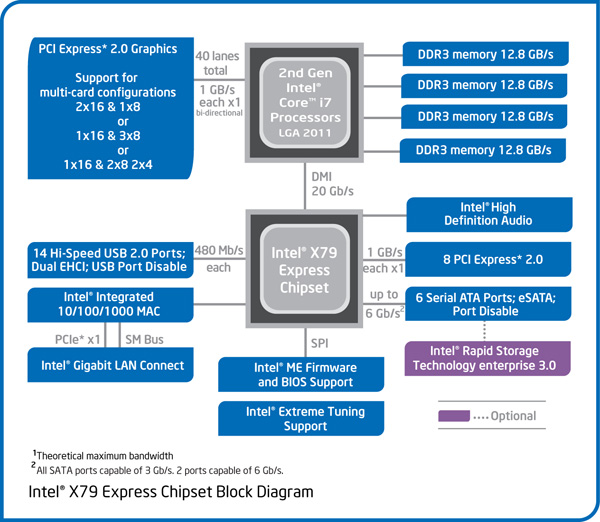
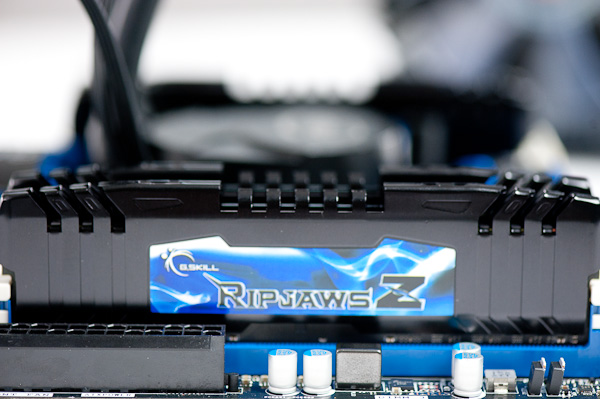
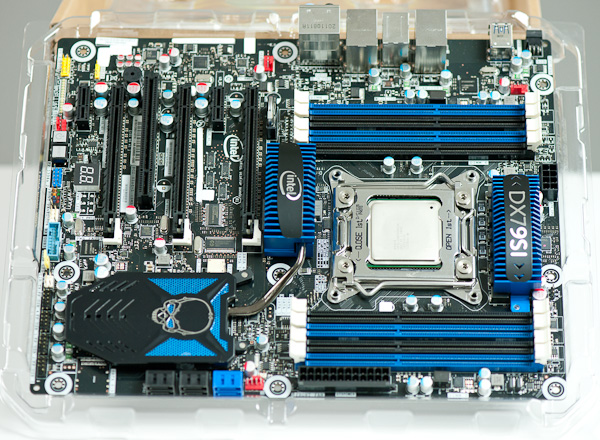
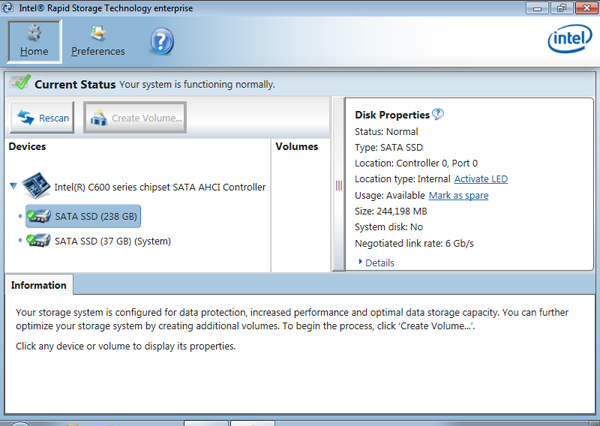








163 Comments
View All Comments
Phylyp - Monday, November 14, 2011 - link
Good review, thanks. I'm researching a new gaming PC, so this review is timely. Right now, seeing the comparative performance of the 2600K vs 3960X makes me want to wait for Ivy Bridge's 2600K replacement to see what sort of VFM that offers, compared to the 3930K.DaFox - Monday, November 14, 2011 - link
> Here we see a 40% increase in performance over the 2600K and FX-1850.On Page 5.
StealthGhost - Monday, November 14, 2011 - link
I'm guessing by these results 2600k / 2500k is going to be a much better buy for gaming vs the 3930kThe 2600k setup (mobo/cpu) I have is, from the prices in the motherboard and CPU review, 485 dollars cheaper than a 3930k+lga2011mobo setup ($400 vs $885). More than double what I paid and while the review for that one isn't out yet, even the 3960x isn't worth double just for gaming (obviously not what it is made for but people will buy it for gaming anyways).
I'd like to see i7 930 vs the 3930k in the review if at all possible since that is the replacement, no? Obviously 2600k as well.
Any idea when that one will be up?
yankeeDDL - Monday, November 14, 2011 - link
Tomshardware had the exact same conclusion.The 3960X is a workhorse and, arguably, the fastest CPU available to desktops today, however, at $999 its value is just not there.
For a shademore than 1/2 its price you get something only marginally slower, and only in certain scenarios. Gamers, for example, have very little benefits from the extra $350 over the 3930.
StealthGhost - Monday, November 14, 2011 - link
Yeah according to their review in BF3 the $999 processor would give me 0 gains since I have one card (GTX 570). If I have 2 which I might later this month it would give me 3.5 fps more, but then I wouldn't be able to afford the 2nd card in the first place haha.Core scaling and cache useage isn't there yet for a lot of games I guess.
B3an - Monday, November 14, 2011 - link
It's pathetic that the new game engine used for BF3 dont even make use of more than 4 cores, or extra cache. And this engine is meant to be for future games... not impressed.Makaveli - Monday, November 14, 2011 - link
so why don't you design a better engine ??Anand Lal Shimpi - Monday, November 14, 2011 - link
As soon as we can get our hands on a 3930K sample :)iwod - Monday, November 14, 2011 - link
QuickSync is really for casual users only. It doesn't offer any advantage over x264 apart from the saved CPU time. x264 is faster then QuickSync with Ultrafast mode, with better quality, and much better quality with other mode then QuickSync can ever get.So QuickSync is good if i want to transfer my media files to my portable, where quality doesn't really matter since i have the original file backed up. It is used for convenience.
Anyone getting a SB-E and doing encoding would properly better off with x264 then QuickSync.
The next version of QuickSync is said to have vastly improved quality and speed.
Manabu - Tuesday, November 15, 2011 - link
Intel's QuickSync quality is somewhere around x264 superfast/veryfast, for the same bitrate. Ultrafast isnt the best tradeoff for speed and quality, as it gives up everything for speed.But I agree, someone with an Sandy Bridge E would be better off using x264 if he learns how to.
A good comparison on speed and quality between GPU and CPU only encoders:
http://www.behardware.com/articles/828-1/h-264-enc...
The only thing they missed is that, if you only care about quality, and not an specific filesize/bitrate, you should be using CRF, and not 2-pass, and much less one pass with --bitrate.